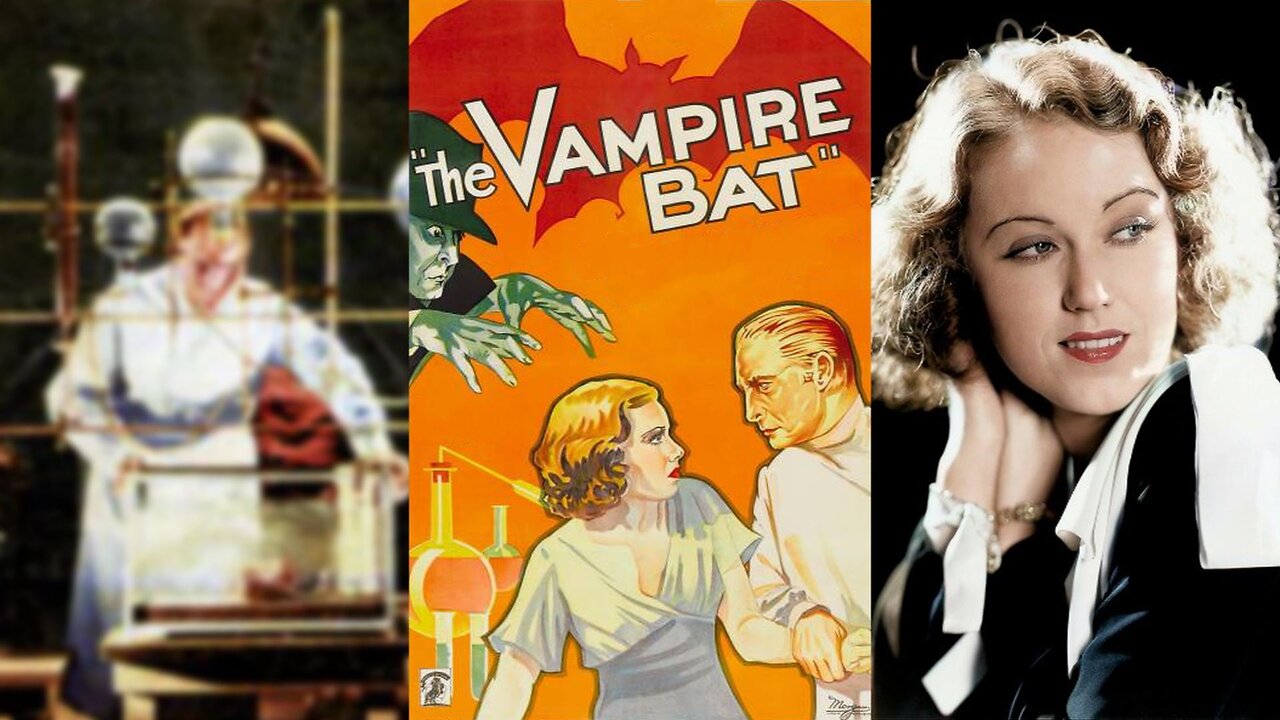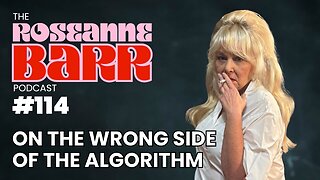Premium Only Content

THE VAMPIRE BAT (1933) Lionel Atwill, Fay Wray & Melvyn Douglas | Drama, Horror, Mystery | B&W
The Vampire Bat is a 1933 American Pre-Code horror film directed by Frank R. Strayer and starring Lionel Atwill, Fay Wray, Melvyn Douglas, and Dwight Frye.
SYNOPSIS
When corpses drained of blood begin to show up in a European village, vampirism is suspected to be responsible.
When the villagers of Kleinschloss start dying of blood loss, the town fathers suspect a resurgence of vampirism, but police inspector Karl Brettschneider remains skeptical.[1] Scientist Dr. Otto von Niemann, who cares for the victims, visits a patient who was attacked by a bat, Martha Mueller. Out of appreciation for her kindness, Martha is visited by a mentally challenged man named Hermann Gleib, who claims he likes bats because they are "soft like cat" and "nice".
On the doctor's journey home, he meets Kringen, one of the townsfolk, who claims to have been attacked by the vampire in the form of a bat, but withheld his story from the town in order to not spread fear. Dr. von Niemann encourages Kringen to tell the townsfolk of his story. Kringen becomes suspicious that Gleib may be the vampire due to his obsession with bats. Gleib lives with bats and collects them off the street.
Dr. von Niemann returns to his home, which also houses Brettschneider's love Ruth Bertin, Ruth's hypochondriac aunt Gussie Schnappmann, and servants Emil Borst and Georgiana. Fear of the vampire and suspicion of Gleib quickly spread around the town and people start fearing him. Ms. Mueller is killed that night. The analyses of Dr. von Niemann and another doctor, Dr. Haupt, conclude that the death is the same as all of the previous deaths – blood loss, with two punctures in the neck caused by needle-sharp teeth. Gleib enters the examination, and upon seeing the dead body, runs away screaming.
Next morning, Gleib enters Dr. von Niemann's garden, where Dr. von Niemann, Brettschneider and Bertin are discussing vampires inside the house. The town fathers enter the house and announce that Kringen is dead and Gleib is missing. An angry mob hunts down Gleib and chases him through the countryside and into a cave, where he falls to his death.
Upon hearing of Gleib's death, however, Brettschneider's conviction is erased. Dr. von Niemann tells Brettschneider to go home and take sleeping pills, but gives him poison instead, intent on draining his blood. Bertin discovers Dr. von Niemann telepathically controlling Borst, who is at Brettschneider's house. It is revealed that Dr. von Niemann has created an artificial lifeform and is using the blood to feed his organism. He ties Bertin up and gags her in his lab. Borst supposedly enters with Brettschneider's body on a trolley. Dr. von Niemann walks over to Borst, who is revealed to be Brettschneider (who did not take the pills) in costume, with the real Borst on the trolley. Brettschneider pulls a gun on Dr. von Niemann and walks over to untie Bertin. Dr. von Niemann then wrestles Brettschneider, who drops the gun.
CAST & CREW
Lionel Atwill as Dr. Otto von Niemann
Fay Wray as Ruth Bertin
Melvyn Douglas as Karl Brettschneider
Maude Eburne as Gussie Schnappmann
George E. Stone as Kringen
Dwight Frye as Hermann Gleib
Robert Frazer as Emil Borst
Rita Carlisle as Martha Mueller
Lionel Belmore as Bürgermeister Gustave Schoen
William V. Mong as Sauer
Stella Adams as Georgiana
Paul Weigel as Dr. Holdstadt
Harrison Greene as Weingarten
William Humphrey as Dr. Haupt
Carl Stockdale as Schmidt
Paul Panzer as Townsman
Directed by Frank R. Strayer
Written by Edward T. Lowe Jr.
Produced by Phil Goldstone, Larry Darmour
Cinematography Ira H. Morgan
Edited by Otis Garrett
Music by Charles Dunworth
Distributed by Majestic Pictures
Release date January 10, 1933
Running time 63 minutes
Country United States
Language English
NOTES
Fay Wray and Lionel Atwill had been in the successful film Doctor X the previous year, and had already wrapped up work on Mystery of the Wax Museum for Warner Bros. This was quite a large-scale release and would have a lengthy post-production process. Seeing a chance to exploit all the advance press, poverty row studio Majestic Pictures Inc. contracted Wray and Atwill for their own "quickie" horror film, rushing The Vampire Bat into production and releasing it in January 1933.
Majestic Pictures had lower overheads than the larger studios, which were struggling at the time during the Great Depression. Part of the reason that The Vampire Bat looked almost as good as any Universal Pictures horror film is because Majestic leased James Whale's castoffs, the “German Village” backlot sets left over from Frankenstein (1931) and the interior sets from his film The Old Dark House (1932).
#oldmovies #freemovies #drama #fantasy #classicfilms #freemoviesonline #blackandwhite #lostandfoundfilms
-
 16:52
16:52
Lost n Found Films
11 days agoWATERLOO (1929) Podcast | Cinema Gem
54 -
 19:51
19:51
Robbi On The Record
20 hours agoElectronic Tattoos Measuring Thoughts? From iPhone to iSkin
1088 -
 2:15:11
2:15:11
MattMorseTV
4 hours ago $6.17 earned🔴Trump's MASSIVE Oval Office ANNOUNCEMENT.🔴
16.9K30 -
 LIVE
LIVE
Nerdrotic
4 hours ago $6.20 earnedUK Has Fallen, Hollywood DOOM, DC Dysfunction | Friday Night Tights 370
1,985 watching -
 5:52:26
5:52:26
Dr Disrespect
8 hours ago🔴LIVE - DR DISRESPECT - CRONOS: The New Dawn - FIRST IMPRESSIONS
87.8K12 -
 1:30:44
1:30:44
Roseanne Barr
6 hours agoOn the Wrong Side of the Algorithm | The Roseanne Barr Podcast #114
79.9K38 -
 13:53
13:53
TundraTactical
4 hours ago $0.58 earnedFudd Finder : 11 Questions Second Amendment Questions (And Roasts) to Ask Your Friends
13.5K -
 LIVE
LIVE
Wayne Allyn Root | WAR Zone
6 hours agoWAR Zone LIVE | 5 SEPTEMBER 2025
135 watching -
 1:39:50
1:39:50
The White House
6 hours agoPresident Trump Makes Announcements, Sep. 5, 2025
27.6K25 -

Red Pill News
4 hours agoBombshell Biden Docs Invalidate Autopen Pardons on Red Pill News Live
24.9K19